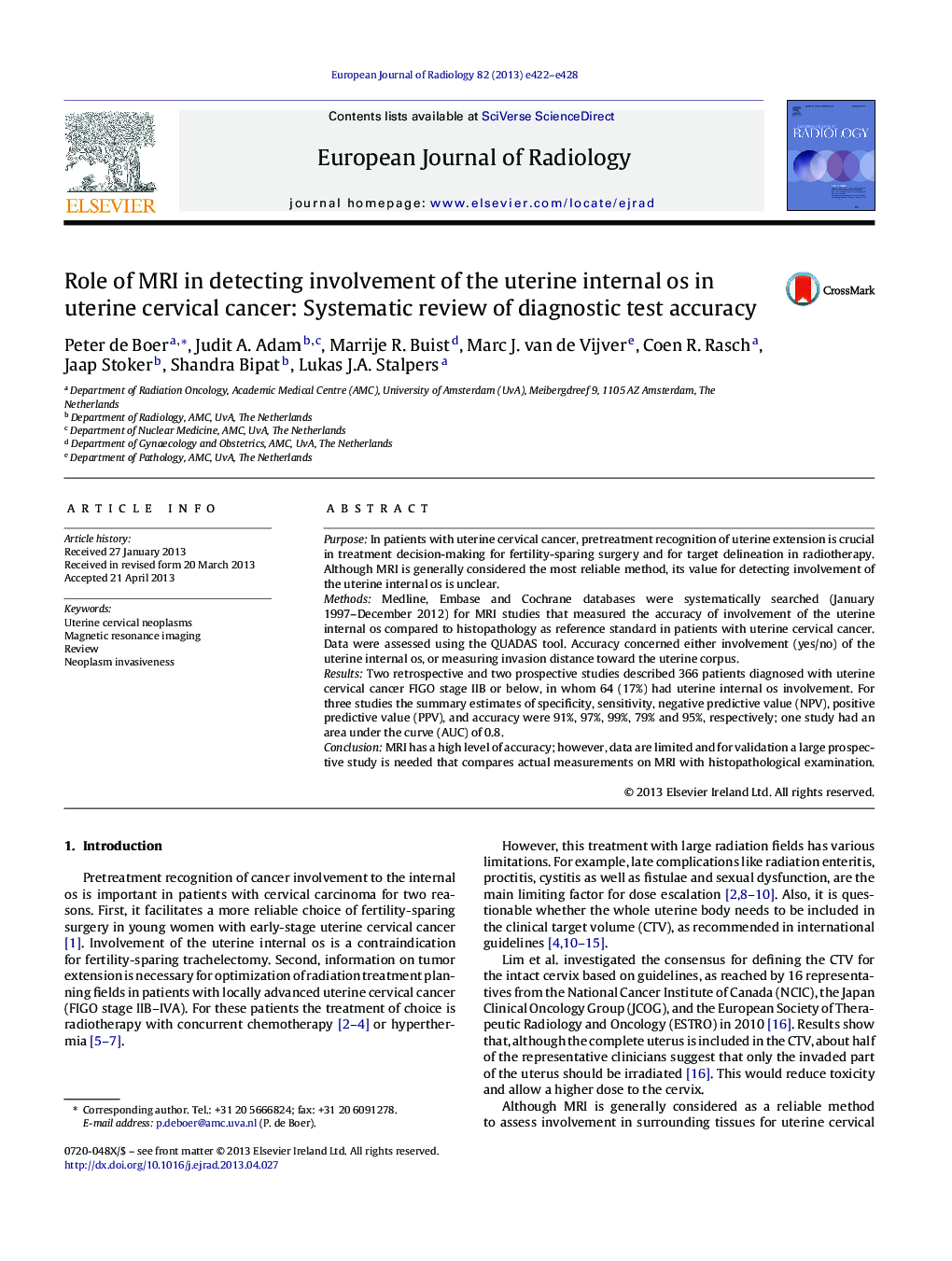| کد مقاله | کد نشریه | سال انتشار | مقاله انگلیسی | نسخه تمام متن |
|---|---|---|---|---|
| 4225691 | 1609774 | 2013 | 7 صفحه PDF | دانلود رایگان |

PurposeIn patients with uterine cervical cancer, pretreatment recognition of uterine extension is crucial in treatment decision-making for fertility-sparing surgery and for target delineation in radiotherapy. Although MRI is generally considered the most reliable method, its value for detecting involvement of the uterine internal os is unclear.MethodsMedline, Embase and Cochrane databases were systematically searched (January 1997–December 2012) for MRI studies that measured the accuracy of involvement of the uterine internal os compared to histopathology as reference standard in patients with uterine cervical cancer. Data were assessed using the QUADAS tool. Accuracy concerned either involvement (yes/no) of the uterine internal os, or measuring invasion distance toward the uterine corpus.ResultsTwo retrospective and two prospective studies described 366 patients diagnosed with uterine cervical cancer FIGO stage IIB or below, in whom 64 (17%) had uterine internal os involvement. For three studies the summary estimates of specificity, sensitivity, negative predictive value (NPV), positive predictive value (PPV), and accuracy were 91%, 97%, 99%, 79% and 95%, respectively; one study had an area under the curve (AUC) of 0.8.ConclusionMRI has a high level of accuracy; however, data are limited and for validation a large prospective study is needed that compares actual measurements on MRI with histopathological examination.
Journal: European Journal of Radiology - Volume 82, Issue 9, September 2013, Pages e422–e428